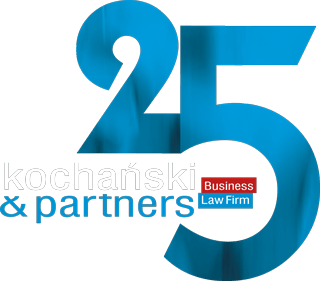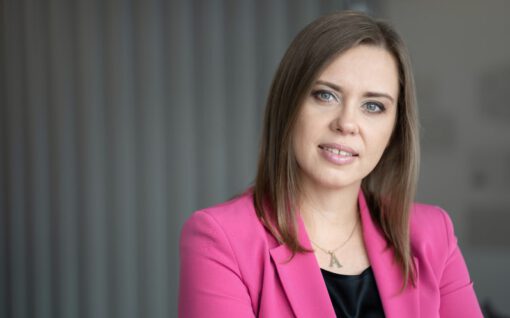On 12 May 2022, the lower house of the Parliament (Sejm) adopted the Amendment to the Personal Income Tax Act and Certain Other Acts – the so-called Polish Deal 2.0 (print no. 2186).
Below we present a summary of what we believe to be the most important tax solutions provided in Polish Deal 2.0.
The abolition of the middle class relief and the reduction of the tax rate applicable to band 1 tax rate from 17% to 12%
- In the first instance, the so-called middle class relief, which was seen as inconsistent and complicating the tax system, has been abolished;
- Instead, a new, lower tax rate has been proposed. The 12% tax rate will apply to every taxable person (earning income taxable based on tax brackets), regardless of the source of income, amount of deductible costs, the fact of being employed by several employers or receiving a pension at the same time.
- Taxable persons to whom the abolition of the middle class relief would not be favourable, are entitled to reduce their tax liability by the amount of the loss caused by the change of the system. In the opinion of the legislator, this arrangement ensures that the abolition of the middle class relief will not lead to any deterioration in the situation of taxable persons previously entitled to the relief.
New deductible amount
- The new deductible amount (calculated based on the tax-free amount of PLN 30,000) will be PLN 3,600 (PLN 30,000 x 12% = PLN 3,600).
- As a consequence of the change in the deductible amount, the amount reducing the monthly advance tax payments will be reduced from PLN 425 to PLN 300 (1/12 of the new deductible amount of PLN 3,600 = PLN 300).
Change in rules for taxable persons to apply a tax-free amount
- A taxable person will be entitled to designate up to three tax remitters who can apply a deductible amount;
- This means that a taxable person will be allowed to “split” 1/12 of the deductible amount and therefore authorise up to three tax remitters to apply such deduction. This change is beneficial for those with multiple jobs, who until now could only designate one employer to apply the deduction;
- In addition, the new regulations will enable the application of the deductible amount by all tax remitters, including ordering parties and other remitters paying remuneration for personal services, as referred to in Article 13 of the PIT Act, and remitters collecting advance payments on income from property rights.
Possibility for taxable persons taxed in 2022 with flat tax or lump tax on registered revenue (Polish: ryczałt od przychodów ewidencjonowanych) to opt for taxation based on tax brackets
- The new act will enable taxable persons subject to flat tax or lump tax on registered revenue in 2022, to opt for taxation based on tax brackets.
Taxable persons subject to flat tax in 2022
- Taxable persons earning income in 2022 from non-agricultural business activity or special divisions of agricultural production subject to flat tax, after the end of 2022 will be able to opt for such income to be taxed based on tax brackets. This choice will be made in the annual PIT-36 return filed for 2022. In this return, taxable persons will report the income subject to flat tax in 2022.
- The possibility of opting for tax brackets after the end of the tax year means that taxable persons will be obliged to calculate and pay advance tax payments due on income earned in 2022 under the existing rules. These advances will be shown in the PIT-36 return without the need to be recalculated in accordance with the rules applicable to taxation based on tax brackets.
- The decision to opt for taxation of income earned in 2022 based on tax brackets will apply only to that year. Thus, if at the beginning of 2022 (or in previous years) the taxable person opted for the flat tax, then in accordance with the applicable regulations (Article 9a(2b) of the PIT Act), this form of taxation will also apply to subsequent years, including 2023.
Lump tax on registered revenue
- Taxable persons earning revenue in 2022 from non-agricultural business activity or from the sale of processed plant and animal products originating from own cultivation, breeding or rearing, subject to lump tax on registered revenue, after the end of 2022 will be able to opt for the taxation of such revenue based on tax brackets via the annual PIT-36 return filed for 2022. In this return, taxable persons will report the income taxed according to the lump tax rate in 2022.
- The possibility of opting for tax brackets after the end of the tax year means that taxable persons will be obliged to calculate and pay the due lump tax on registered revenue under existing rules. The due and paid lump tax on registered revenue for particular months or quarters of 2022 will be shown in the PIT-36 return as monthly or quarterly advance tax payments, without the need to be recalculated in accordance with the rules applicable to taxation based on tax brackets. In addition, in their PIT 36 tax return, taxable persons will show their income (loss) determined according to the rules applicable to taxable persons who keep books of account.
- Taxpayers who opt for the tax brackets in their PIT-36 return will be required, prior to filing this return, to keep and complete a revenue and expense ledger, in which they will show the income from business activity earned in 2022.
- The decision to opt for taxation of income earned in 2022 based on tax brackets will apply only to that year. Thus, if at the beginning of 2022 (or in previous years) the taxable person opted for the lump tax on registered revenue, then in accordance with the applicable regulations (Article 9(1b) of the Lump Tax Act), this form of taxation will also apply to subsequent years, including 2023.
- Taxable persons earning revenue in 2022 from non-agricultural business activity or from the sale of processed plant and animal products originating from own cultivation, breeding or rearing, which before 1 July 2022 are subject to lump tax on registered revenue, until 22 August 2022 will be able to submit a declaration on opting out of taxation of the revenue earned from 1 July to 31 December 2022 with the lump tax on registered revenue, and settle the tax as of 1 July according to tax brackets. As a result, taxable persons who make such a declaration, after the end of 2022, will be obliged to file two annual tax returns, i.e. a PIT-28, showing revenue earned from 1 January to 30 June 2022, and a PIT-36, showing income earned from 1 July to 31 December 2022. In this case the decision to opt for taxation based on tax brackets will also apply to subsequent years, unless the taxable person chooses another form of taxation.
- Taxable persons earning private lease revenue in 2022, who were paying lump tax on registered revenue on this account throughout the year, will be permitted from the end of the year to opt for taxation based on tax brackets and may select this option in their annual PIT-36 returns.
Introducing a limited deduction for paid health insurance contributions
- Allowing business owners, taxed other than based on tax brackets, to deduct a part of their health insurance contributions paid with respect to their taxed business activity:
- as regards taxable persons subject to a 19% flat tax – via health insurance contributions, paid by the taxable person in the total amount not exceeding PLN 8,700 in a tax year, being deducted from income or recognised as deductible costs of their business activity;
- as regards taxable persons subject to lump tax on registered revenue – via 50% of health insurance contributions paid in a tax year being deducted from revenue;
- as regards taxable persons subject to the tax card – via 19% of their health insurance contributions paid in a tax year being deducted from tax.
Restoring preferential taxation of single parents’ income
- Preferential taxation of single parents’ income will involve calculating tax:
- at twice the rate on half of their income in the case where at least one of the children brought up by such a person has a disability certificate issued based on separate regulations;
- at 1.5 multiplied by the amount of tax calculated on a single parent’s income divided by 1.5 – in other cases.
- Consequently, only single parents with a disabled child will settle their tax bill as before, i.e. calculate tax at twice the rate on half of their income (as is the case for joint settlements with a spouse). Single parents of healthy children will settle their tax bill at a less preferential rate of 1.5.
Stricter monuments allowance regulations
- According to Polish Deal 2.0, the monuments allowance will cover expenses:
- incurred in a tax year on payments to a housing community’s or a housing cooperative’s renovation fund established, according to separate regulations, for a fixed monument entered in the register of monuments or the records of monuments;
- on maintenance, restoration or construction works performed on a fixed monument entered in the register of monuments;
- The new regulations will also allow for the deduction of expenses for the maintenance, restoration or construction works in a fixed monument only after their completion.
- The new regulations in this respect will be effective from 1 January 2023.
General partners of limited joint-stock partnerships subject to social security and health insurance contributions
- From 1 January 2023, general partners of limited joint-stock partnerships will be covered by mandatory social and health insurance.
- The health contribution assessment base will be the average monthly remuneration in the enterprise sector in the fourth quarter of the previous year, including profit distributions.
Do you have any questions? Contact the author




